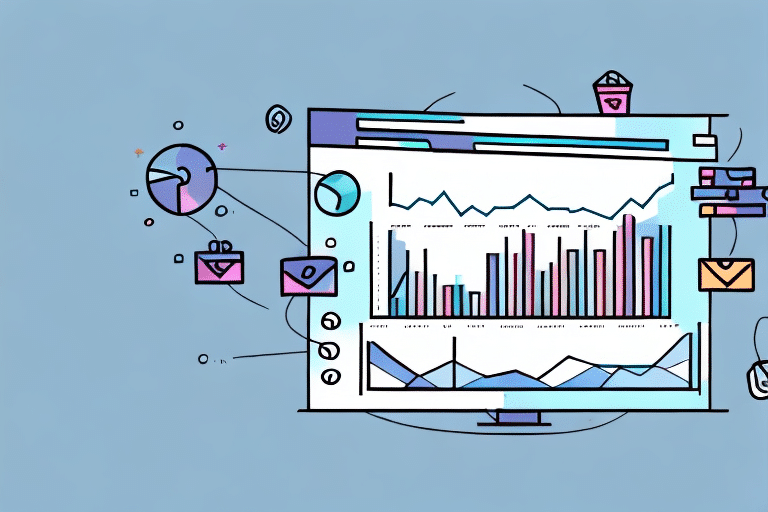Measuring Demand Forecast Accuracy and Its Impact on E-Commerce Operations
Accurate demand forecasting is a critical aspect of e-commerce businesses. Understanding and predicting demand accurately directly impacts profitability. In a highly competitive e-commerce marketplace, a single misjudgment in demand forecasting can lead to excess inventories or stockouts, ultimately affecting the bottom line. This article explores the importance of measuring demand forecast accuracy and its impact on e-commerce operations.
1. Importance of Accurate Demand Forecasting in E-Commerce
Running an e-commerce business involves managing large inventory levels and dealing with fluctuations in demand, which can be challenging. Accurate demand forecasting enables businesses to optimize operations and plan inventory levels effectively. By analyzing past sales patterns and customer trends, businesses can predict future demand, prepare accordingly, and successfully meet customer needs. Misjudgments in forecasting can lead to financial losses, making accurate demand forecasting essential.
- Optimized Inventory Levels: Prevents overstocking and understocking, reducing unnecessary expenses.
- Cost Reduction: Minimizes storage costs and avoids lost sales due to stockouts.
- Enhanced Customer Satisfaction: Ensures products are available when customers need them, fostering loyalty.
According to a Forbes article, businesses that invest in accurate demand forecasting see an average revenue increase of 6-10%.
2. Challenges with Traditional Forecasting Methods
Traditional demand forecasting methods were effective when dealing with fewer products, but in today's dynamic e-commerce environment, these methods often fall short. Relying primarily on historical sales figures and simple trend analysis, they fail to account for external factors such as social media trends and seasonal changes.
Limitations of Traditional Methods
- Inflexibility: Difficulty adapting to changing market conditions and customer preferences.
- Limited Scope: Inability to incorporate new product launches or changes in product features.
- Niche Markets: Struggles to accurately forecast demand for specialized or niche products.
Consequently, businesses may experience inaccurate forecasts, leading to stockouts or overstocking. Embracing advanced analytics and machine learning can overcome these limitations by considering a broader range of factors.
3. Leveraging Data Analytics for Improved Forecasting
Data analytics plays a vital role in enhancing demand forecasting for e-commerce businesses. By collecting and analyzing large volumes of complex data from multiple sources, businesses can utilize predictive data analysis to identify trends and patterns in customer behavior.
Benefits of Data Analytics
- Accurate Predictions: Machine learning algorithms analyze various factors, including customer behavior, competitor activity, and economic indicators.
- Real-Time Insights: Enables businesses to adapt quickly to changes in demand.
- Optimized Inventory Management: Ensures the right amount of stock is available, reducing the risk of overstocking or understocking.
According to a McKinsey report, companies that leverage data analytics in their forecasting processes see a 20% improvement in forecast accuracy.
4. Selecting the Right Demand Forecasting Tools
Choosing the appropriate demand forecasting tools is crucial for the success of e-commerce businesses. These tools should be capable of collecting, processing, and analyzing data in real-time, providing actionable insights to optimize inventory management.
Key Considerations
- Real-Time Data Processing: Ensures up-to-date forecasts based on the latest information.
- Integration Capabilities: Seamlessly integrates with other systems like inventory management and supply chain software.
- User-Friendly Interface: Facilitates easy interpretation and communication of forecast data to stakeholders.
Combining quantitative data (e.g., sales history, website traffic) with qualitative data (e.g., customer feedback, market trends) enhances forecasting accuracy. Regularly updating forecasting models to reflect changing market conditions is also essential.
5. Impact of Forecast Inaccuracy on Operations and Customer Satisfaction
Poor demand forecast accuracy can lead to several issues in e-commerce businesses:
- Excess Inventory: Results in increased holding costs and potential waste.
- Stockouts: Causes lost sales opportunities and dissatisfied customers.
- Inefficient Resource Allocation: Misallocation of resources towards overestimated products while neglecting high-demand items.
These factors not only affect profitability but also harm brand reputation and customer loyalty. According to a Harvard Business Review study, inaccurate forecasting can decrease customer satisfaction by up to 15%, directly impacting repeat business.
6. Key Metrics for Measuring Forecast Accuracy
Assessing the accuracy of demand forecasting involves several key metrics:
- Mean Absolute Percentage Error (MAPE): Calculates the average percentage deviation between forecasted and actual sales.
- Root Mean Square Error (RMSE): Measures the deviation between forecasted and actual sales in absolute terms.
- Forecast Bias: Identifies if forecasts are consistently overestimating or underestimating actual sales.
Regularly monitoring these metrics allows businesses to refine their forecasting processes, ensuring more accurate and reliable predictions. External factors such as market trends and unexpected events should also be considered to maintain forecast relevance.
7. Strategies to Enhance Forecast Accuracy and Optimize Inventory
Implement Advanced Analytics and Machine Learning
Utilizing advanced analytics and machine learning algorithms can significantly improve forecast accuracy. These technologies analyze historical sales data, market trends, and other relevant factors to generate precise predictions.
Collaborate with Stakeholders
Engaging with suppliers, sales teams, and marketing departments facilitates the sharing of critical information, leading to more accurate demand forecasts. Collaborative forecasting ensures alignment across all business functions.
Regularly Update Forecasting Models
As customer behavior and market conditions evolve, it's essential to adjust forecasting models accordingly. Incorporating new data sources and revising assumptions help maintain forecasting accuracy.
Optimize Inventory Management
Accurate demand forecasts enable businesses to identify peak demand periods and adjust inventory levels accordingly. This optimization minimizes holding costs, reduces waste, and ensures product availability.
According to a Gartner report, businesses that optimize inventory based on accurate forecasts can reduce inventory holding costs by up to 30%.
8. Enhancing Customer Satisfaction through Accurate Forecasting
Demand forecast accuracy is vital for providing timely product delivery and excellent customer service. Accurate forecasts ensure optimal stock levels, preventing product shortages and delays.
- Timely Order Fulfillment: Ensures customers receive their orders promptly.
- Product Availability: Maintains adequate inventory to meet customer demand.
- Positive Customer Experience: Leads to repeat business, referrals, and positive reviews.
Research by Nielsen indicates that 70% of customers are more likely to return to a business that consistently meets their product expectations.
In conclusion, measuring and optimizing demand forecast accuracy is essential for e-commerce businesses. It helps maintain optimal inventory levels, minimize waste, reduce operating costs, improve customer satisfaction, and maximize profitability. By leveraging data analytics and selecting the right forecasting tools, businesses can achieve accurate demand predictions, ensuring sustained growth and a competitive edge in the dynamic e-commerce industry.




















